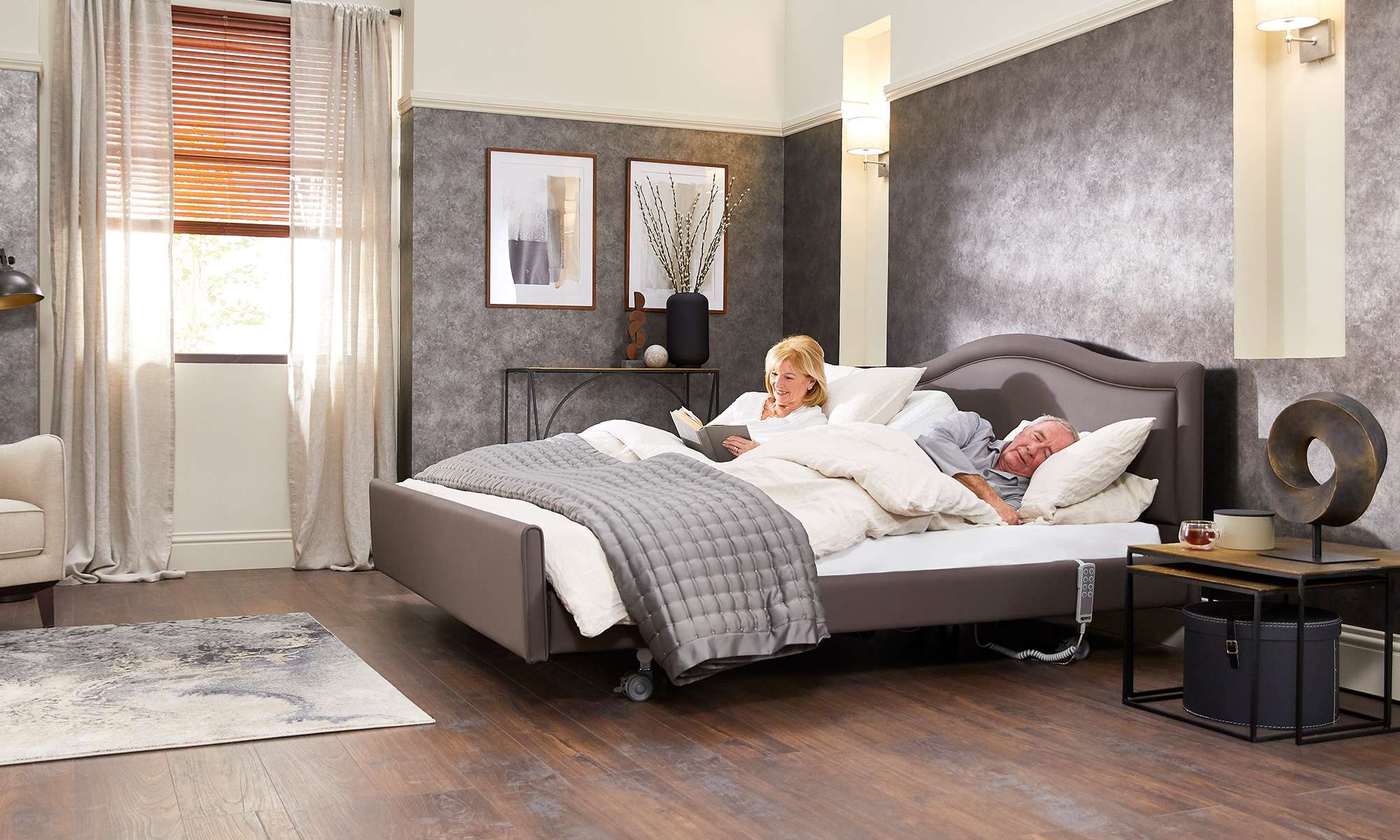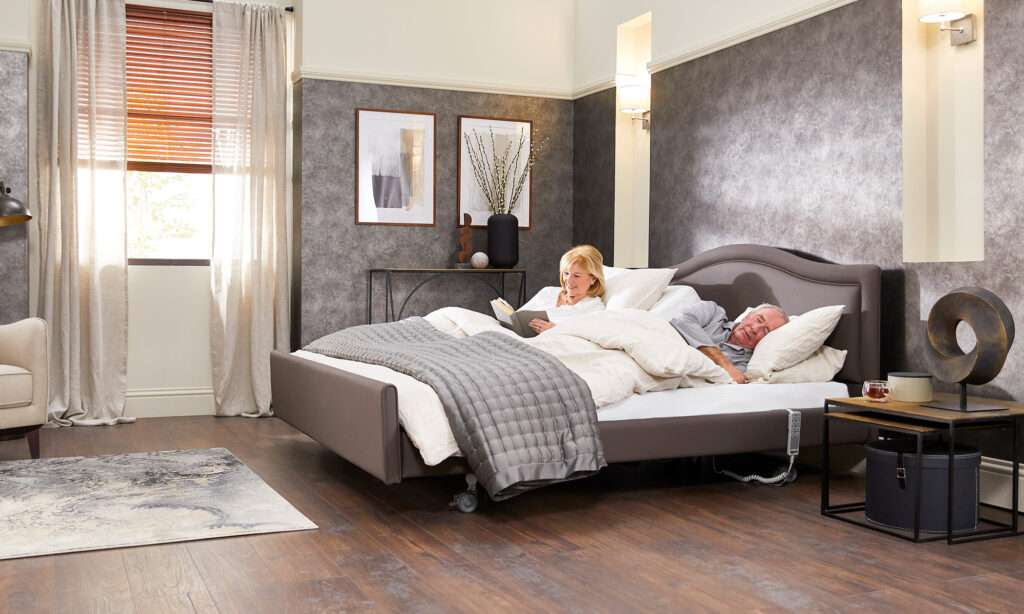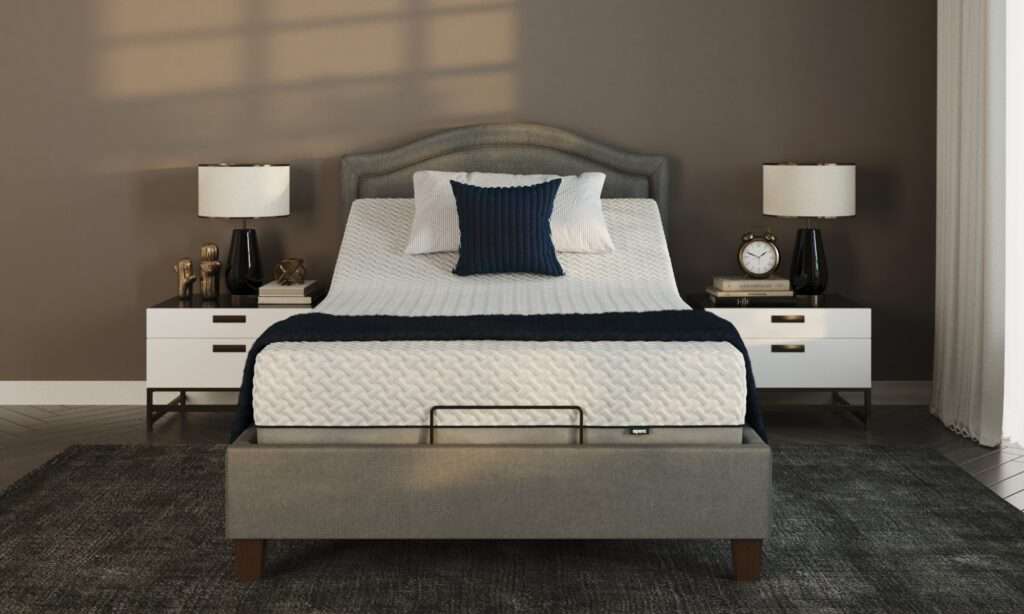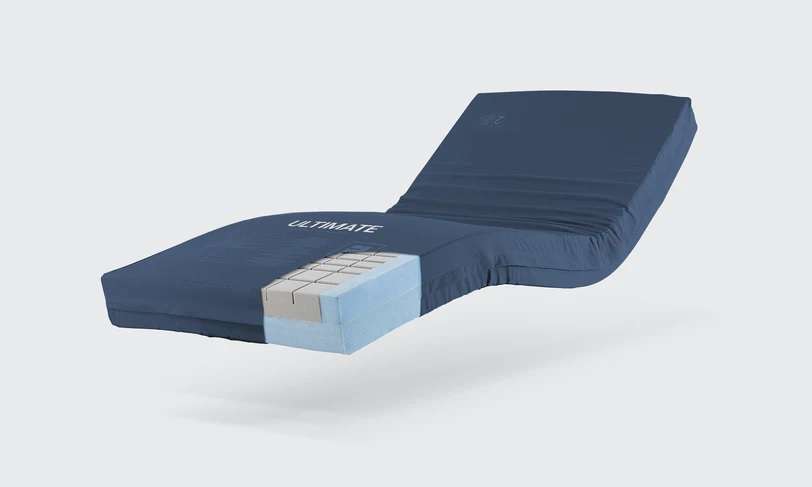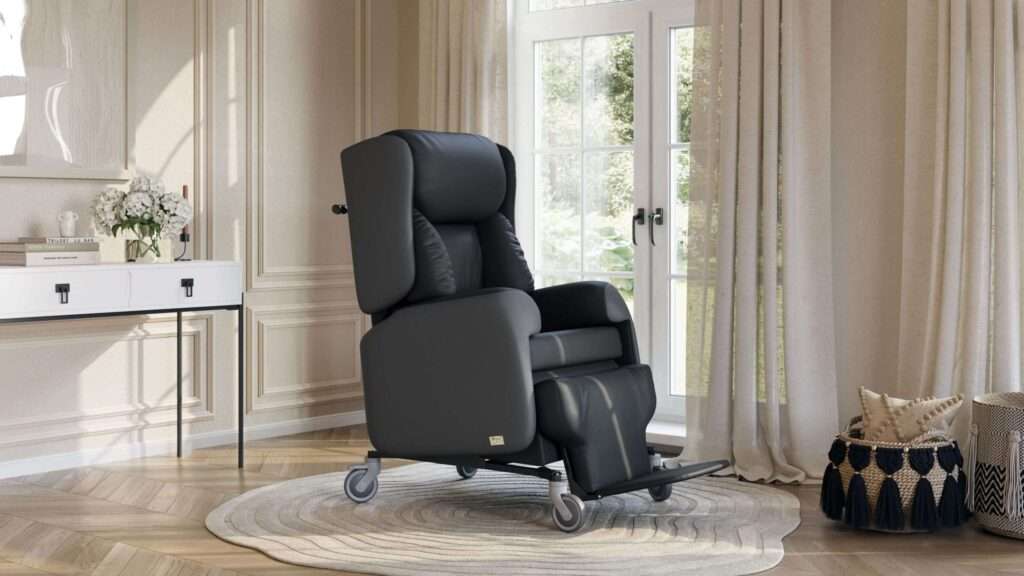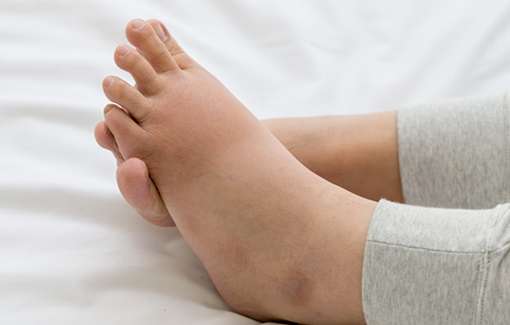This article will go over the options you have when looking to get a hospital bed at home. There are a range of reasons people may require a hospital style medical bed to provide care in their home including:
- Upgrading a current bed.
- Those recently discharged from hospital.
- Community care
- Respite care
- Hospice care
- Moving in/out of care homes.
Know what you're looking for?
In of these situations, there are 2 main ways to go about getting a medical bed for your home.
Each of these options has positive and negative elements and below, we’ll go into what they are.
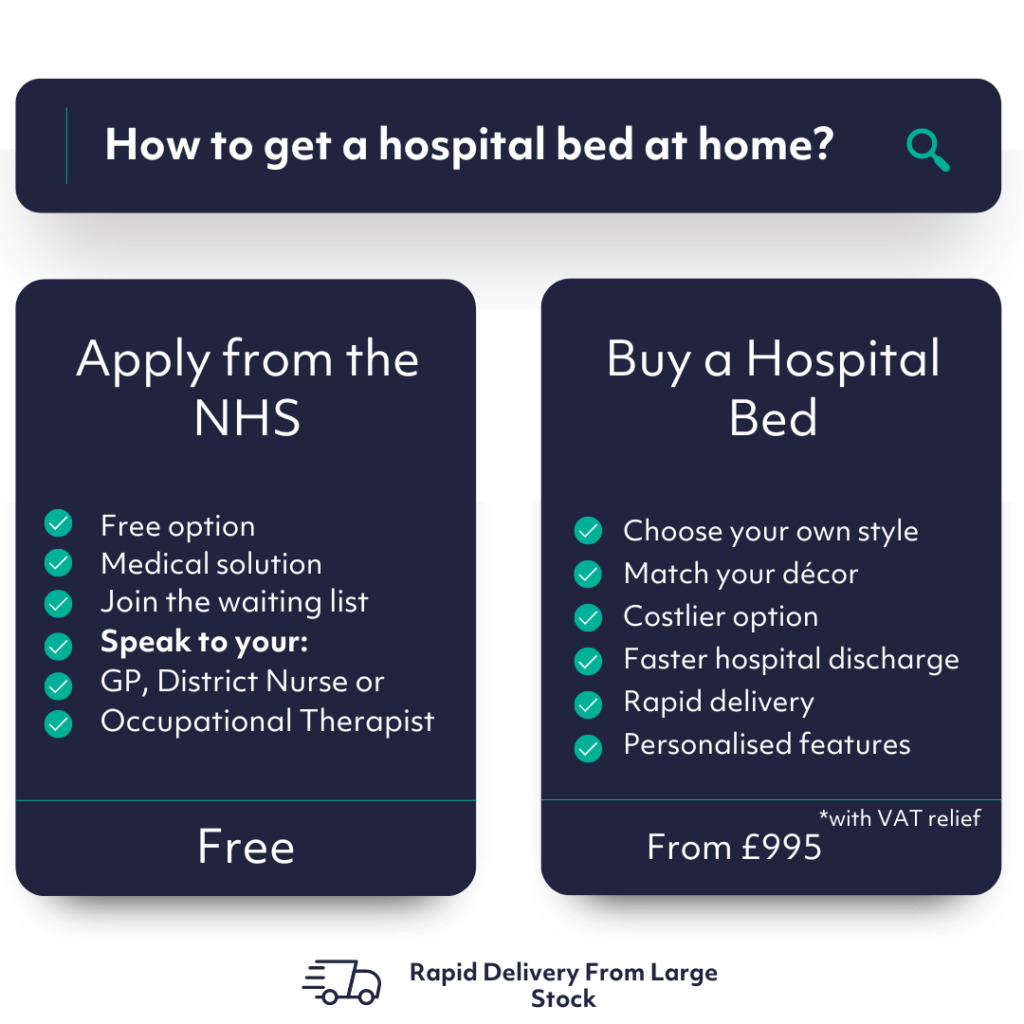
You can also get a free NHS hospital bed at home with the recommendation of a healthcare professional, we’ll go over how to do that here as well.
Jump straight to…
- Is a Medical Bed at Home Worth It?
- Hospital Bed | Features You Can Expect
- How to Get a Hospital Bed at Home in the UK
- NHS Criteria For A Hospital Bed At Home
- Essential Features For A Hospital Bed At Home
- Other Features To Consider
- Best Budget Hospital Style Bed For Your Home
- Best Turning Bed For Use As A Standing Aid
- Best Hospital Bed That Looks Homely
Is a Medical Bed at Home Worth It?
In the UK, 1 in 3 hospital beds are occupied by a patient who is medically fit to discharge.
These patients remain in hospital beds even if they don’t need to due to the ongoing the lack of appropriate care equipment when they are discharged to their home.
In any healthcare facility, it is important to ensure there is a good patient flow to ensure things run efficiently. This is especially the case in hospitals when patients are ‘fit to discharge’.
The slow discharge of medically fit patients also makes it difficult for inpatients to get into the hospital unable to transfer patients and get back on the road. This is what led to the long queues of ambulances outside UK hospitals seen in summer 2022.

Long ambulance queues outside NHS hospitals are not uncommon in parts of the UK in part due to delayed patient discharge.
Lack of appropriate healthcare equipment in the community is one of the many reasons for the ongoing backlogs in NHS hospitals across the UK.
“The NHS has a shortage of hospital beds, with occupancy rates consistently exceeding safe levels.” – British Medical Association.
“We have older and disabled [people] with complex needs, yet social care capacity has reduced, and we have 50,000 fewer paid carers,” — Sarah McClinton, president of Association of Directors of Adult Social Services.
Hospital Bed | Features You Can Expect
Hospital beds contain many features you wouldn’t usually expect to find on a bed in someone’s home.
Modern hospital beds are very adaptable to patient needs; designed for safety and to facilitate medical treatment by the NHS and healthcare professionals, they act as a comfortable flat, level surface when sleeping, and provide supportive head or foot elevation with their electric profiling base.
Electric, adjustable beds can have a range of features to benefit users:
The ability to rotate and turn into a chair bed to provide moving and handling assistance for elderly, disabled, bariatric or otherwise low mobility users
However, there are occasions where hospital-style beds are required for home use.
People with long-term health conditions, recently discharged hospital patients, palliative care patients at home rather than in a hospice and individuals with low mobility can all require assistive equipment that provides more support and functionality than a standard bed.
How To Get A Hospital Style Bed At Home in the UK:
In the UK, anyone can buy a hospital-style bed to use at home. You don’t need a prescription or a recommendation from a doctor.
However, hospital beds come in all kinds of sizes, makes, and models. There’s no one set standard – different types of bed exist to suit different patient needs.
So, if you think you or a relative would benefit from having a hospital bed at home, we recommend speaking to a professional. They can make sure you get a bed that meets your care requirements.
There are two main ways to access professional advice on hospital beds for home:
Getting a Free Hospital Bed from the NHS or Social Care Services:
In the UK, you can get a free hospital bed from the NHS, social services or your local council if you meet the criteria. Meeting this criteria requires an assessment or a decision from your GP and could take some time.
An assessment can be done by an occupational therapist in your home, or your GP can make a decision on medical grounds.
What About Loaning a Hospital Bed from the NHS?
If you only need a hospital bed temporarily, a community nurse or other social healthcare professional can arrange for a one to be supplied from an NHS equipment loan store.
This method may be preferable for anyone recently discharged from hospital but would require a hospital style bed to aid their support continued care and rehabilitation at home.
Downside of a Free Hospital Bed From the NHS:
A potential downside to this and any method that can get you a free hospital bed from the NHS is that you may have to wait a while to receive your profiling bed.
Going through the application processes can take a long time; you also won’t get much of an input on the bed’s appearance. Hospital beds supplied through social care services are often bulkier and more clinical looking than hospital beds you can buy for yourself.
This is why some people choose to buy a hospital style bed from a retailer like Vivid Care, you can make sure your new hospital bed is delivered to you quickly.
NHS Criteria For A Hospital Bed At Home
In the UK, there are no specific NHS criteria for getting a hospital bed at home. But if a carer needs to perform certain hygiene and care tasks, then a GP, or a social care worker can arrange for a hospital bed to be put in someone’s home.
These tasks need a profiling bed with more features & functions than normal beds. Ask a community nurse for advice on the best way of making you comfortable.
The table below outlines some of the NHS care & hygiene tasks that might require a using a hospital bed at home.
Buy a Hospital Bed From a Mobility Equipment Retailer:
For many people, buying a hospital bed direct from a mobility equipment supplier is the best and fastest way to support at-home patient care.
By ordering a bed for yourself, you also have more control over the kind of bed that you get. You can opt for single divan style adjustable bed bed, or double profiling beds for couples.
We recommend going directly to a mobility equipment supplier if you:
- Want fast hospital bed delivery
- Want to choose the design and look
- Don’t have an occupational therapist
- Don’t meet the requirements to get a bed through the NHS
Is Any Other Financial Help Available?
It is possible that an external charity may offer financing help to buy a mobility bed, these situations are few and far but it is worth checking with local charities in your area.
There are also VAT relief options available for people with one or more ongoing disabilities, this UK government VAT relief page explains the criteria for zero VAT eligibility on products intended for the care or management of a person’s disability.
Get Expert Advice Today
What About a Profiling Mattress?
you buy a hospital bed from a mobility equipment supplier, you can also choose the type of profiling mattress that will come with your bed, for comfort a standard profiling bed mattress is the choice to make.
For people who expect to regularly spend a bit longer in bed, a foam pressure relief mattress is the recommended choice.
These types of profiling mattresses have pressure distributing materials inside them that reduce the chance of developing pressure sores/ulcers.
Can You Use a Normal Mattress on a Hospital Bed?
You CANNOT use a standard pocket sprung mattress on a profiling bed. They are just not flexible enough to support the profiling movement of the bed panels.
Non-innerspring mattresses (memory foam, latex and some hybrid mattresses) can imperfectly be used but it is best to buy a profiling mattress specifically made to go along with a profiling bed.
You can learn more about how profiling mattresses use airflow to reduce the development of pressure sores/ulcers.
Shop for Hospital Style Beds Online




